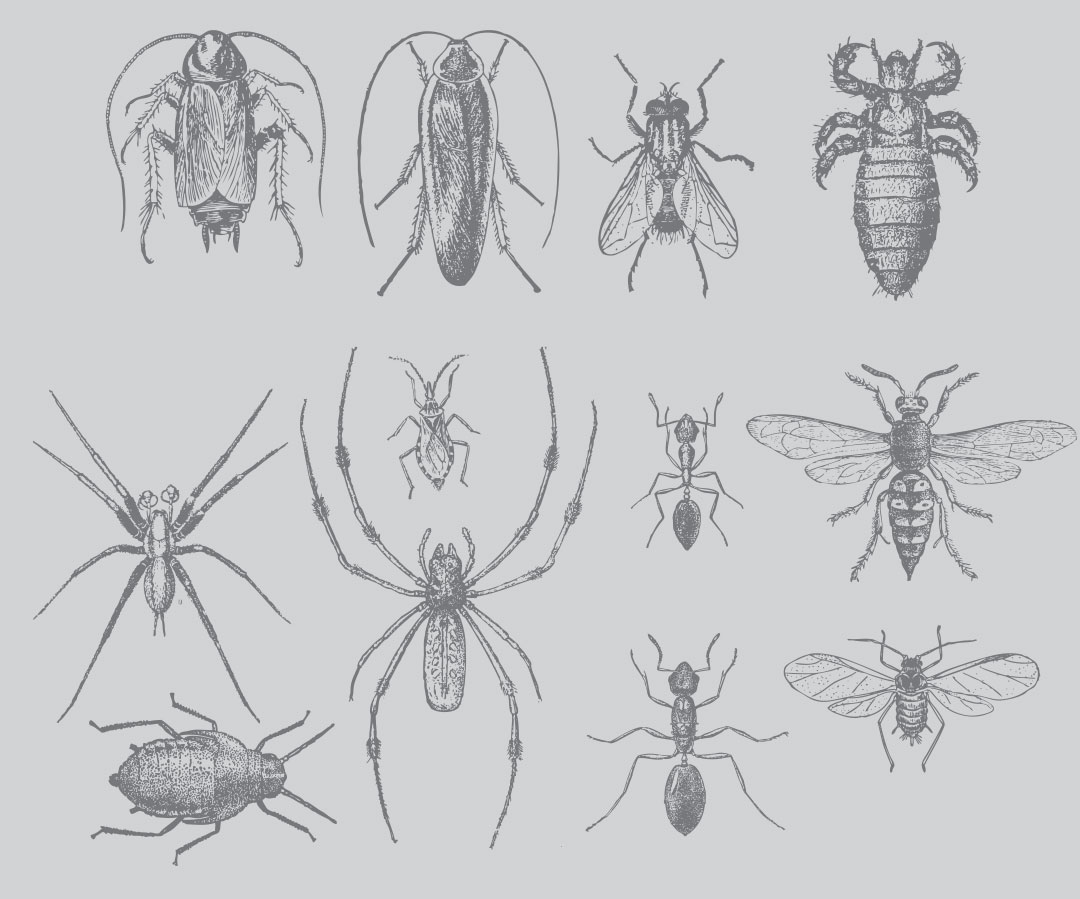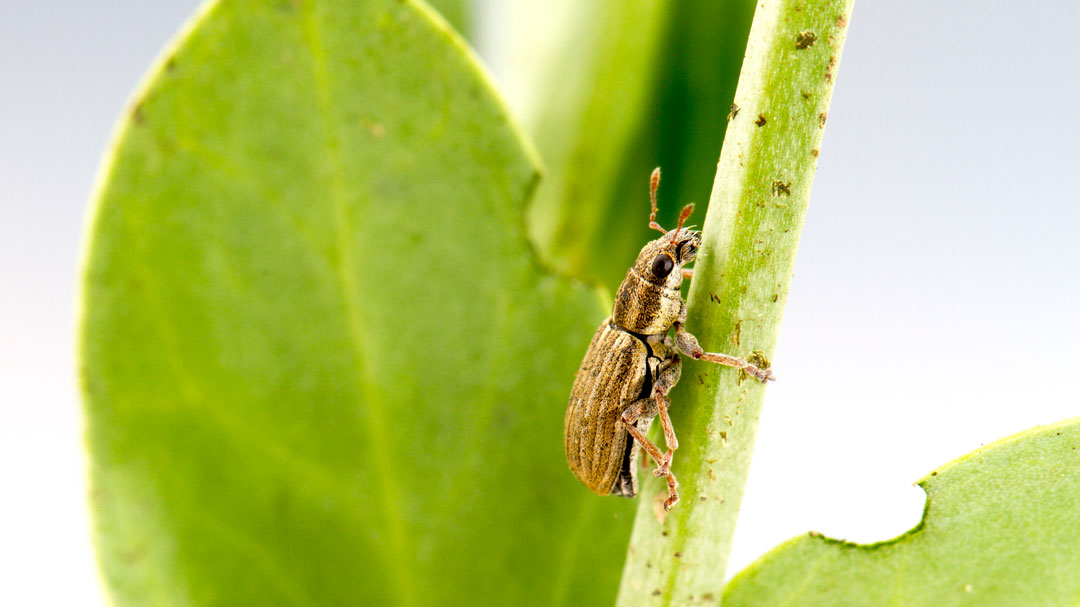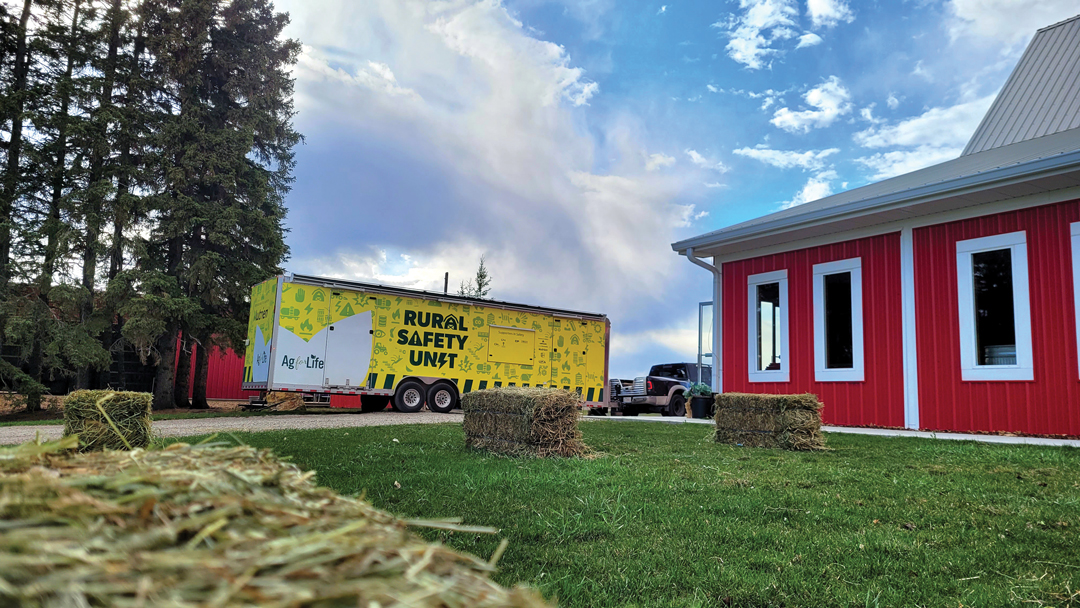DESPERATELY SEEKING SCIENCE
FARMING FORTUNES AND THE PMRA REVIEW PROCESS
BY GEOFF GEDDES
Crop pests are like party crashers: If you can’t get rid of them, at least limit the damage they do. While farmers would be lost without pest control products, they understand the need to regulate their use. But in the drive to review new chemistries and re-evaluate existing ones, some worry that science has taken a back seat. Under the federal authority of the Pest Control Products Act, the Health Canada Pest Management Regulatory Agency (PMRA) is responsible for regulating these products.
“Our mandate is to prevent unacceptable risks to people and the environment from the use of these products,” said André Gagnon, media relations officer for Health Canada. “Health Canada takes a science-based approach to decision-making and works closely with its international counterparts to ensure that regulations for pesticides are aligned.”
Once a product is approved for use in Canada, it is subject to the PMRA’s re-evaluation program using internationally accepted assessment techniques and current scientific information.
“Rigorous, science-based risk assessments are conducted to determine if pesticides continue to meet modern standards for human health and environmental protection while providing value,” said Gagnon. “The result of the re-evaluation of a pesticide can range from continued registration of all uses to updates to use instructions on labels, to the cancellation of all or some uses due to human health or environmental risk concerns.”
Though few would argue against the need for a transparent, predictable, science-based approach to pesticide review and re-evaluation, there is growing concern that the need—at least on the re-evaluation side—is no longer being met.
“In regard to new products, we are quite pleased with the process,” said Pierre Petelle, president and CEO of CropLife Canada. “The PMRA is a world leader in working on harmonized approaches and applying the best, most modern science to assess products.”
As a result, Petelle said innovation is encouraged and growers gain access to the latest tools, keeping Canadian agriculture competitive while protecting our health and environment.
But if the new-product review picture is a thing of beauty, the re-evaluation side is where things get ugly in Petelle’s view.
“The story with re-evaluations is almost opposite to new reviews. Instead of collaboration, the agency works in isolation on their own timeline, making decisions that are sometimes opposed to what the United States Environmental Protection Agency or European agencies are doing.
“The crux of the problem is that we are not being consulted when there are red flags or risk issues during the re-evaluation process.” As a result, said Petelle, there is no opportunity to provide new information about the chemicals or how products are used. Reviewers may be using assumptions from 15 years ago that are now out of date.
“If they reached out to industry when risk questions arose, we could alleviate some concerns before proposed decisions are published that cause angst for our members and the entire agriculture industry. In a nutshell, we are asking for a similar process to that used with new compounds, one that is more collaborative and gives greater consideration to the competiveness of Canadian agriculture.”
Organizations such as Alberta Barley, the Alberta Wheat Commission and Alberta Pulse Growers have expressed that collaboration was missing in a recent PMRA proposed decision to phase out imidacloprid, which belongs to a relatively new class of insecticides called neonics used to control a variety of pests—especially sap-feeding insects—and root-feeding grubs.
“That decision was made with limited data and perceived by industry as a precautionary principle, acting without ample evidence of risk to aquatic invertebrates,” said Nevin Rosaasen, policy and program specialist with Alberta Pulse Growers.
It’s a decision that could have far-reaching implications for farmers. “Imidacloprid is used in a tremendous spectrum of products including seed treatments, foliar treatments and other uses,” said Petelle. “For example, canola growers use imidacloprid to reduce the amount of foliar spraying over millions of acres. Losing that ability could leave them with no alternatives for protecting their seeds, resulting in lost crops and expensive re-seeding.”
Many sectors are now concerned that similar compounds in the neonic family may be headed down the same path, with serious repercussions. They fear that moving away from these products could necessitate the use of farm practices that carry greater environmental impacts, such as tillage and broadleaf foliar spraying.
“Eliminating or phasing out neonics as seed treatments will have drastic impacts on certain crops where insect life cycles and early seedling pressure may result in increased use of non-selective foliar application of insecticides,” said Rosaasen. “This crop protection application method does not differentiate between those targeted pests and the beneficial insects, including parasitoids, that can keep problem insect populations in check and at thresholds that do not warrant action to protect crops.”
While tillage was believed to be a practice that could minimize cutworm pressure in the past, the jury is still out on whether tilling soil kills cutworm eggs and larvae under certain conditions. “Tillage is certainly not a sustainable pest control practice and absolutely increases the risk of soil erosion and soil degradation,” said Rosaasen.
Then there are the economic repercussions to consider. “Certain crops like peas and canola may decline in acres if neonic seed treatments are no longer available. There is no other product on the market that can provide any suppression of the pea leaf weevil and, should Alberta Pulse Growers lose this control product, there will be fewer acres grown as a result.”
Another contentious re-evaluation occurred in June of 2017 regarding Matador-120EC, a contact chemical effective against a broad spectrum of foliar pests. “Again, there was no science consultation with industry and no heads-up on risk issues being considered,” said Petelle. “Then, in June, it was proposed that all agricultural uses be removed for the product. Growers are looking at their toolbox and saying that if this pattern continues, they won’t have any tools left to protect their crops.
“Our members reinvest 10 to 12 per cent of gross sales back into research and development. The industry is constantly innovating, but the regulatory environment must be predictable and transparent to continue to do so.”
The chemicals involved in recent PMRA re-evaluations may differ in name and application, but Petelle said the common threads are the big-picture implications for Canada at home and abroad.
“The issues around the re-evaluation process have garnered attention from almost all sectors of Canadian agriculture because of the types of compounds involved and their importance. Whether you’re a western Canadian pulse grower, a wheat farmer on the Prairies or someone growing fruits and vegetables for the Toronto market, all face the task of battling pests and need a substantial pool of products to help them do that.”
As pressing as the problem may be within our boundaries, Rosaasen said it’s amplified on the world stage. “The fact that the United States has access to a greater number of products results in a competitive disadvantage, especially when no alternatives exist for control or suppression of certain pests. The larger concern is the lack of harmonization of regulatory bodies and, in some instances, differences in maximum residue limits (MRLs). For instance, the PMRA’s proposed revocation of lambda-cyhalothrin included a revocation of MRLs.”
The reality, according to Rosaasen, is that Canada is losing crop protection products faster than new ones are being developed. “We continue to see consolidation in the large crop innovation companies and there are very few remaining that are doing research and development into new products. Many companies are simply reformulating and repackaging off-patent products and are not engaged in research to bring new products or modes of action to commercialization.”
Identifying the problem is one thing; it’s the solutions that can be hard to come by. For Petelle, it starts with finding common ground. “This is not a matter of ‘us versus them.’ Producers are not against the PMRA, nor are we trying to be critical of their personnel. They are a highly respected agency, and we just want to encourage elected officials to give them the funding and the tools to do their job as effectively as possible, with the most robust data that we can muster.”
In spite of differences in perspective on the problem, both sides agree that the PMRA’s job is a vital one. “Health Canada’s top priority is the health of Canadians and their environment,” said Gagnon. “This mandate is fulfilled by re-evaluating registered pesticides and ensuring that they continue to meet modern scientific standards.”
From Petelle’s perspective, “our industry shares the same goals as the PMRA. We want to protect the wellbeing of people and the planet while supplying effective tools for farmers to grow safe, healthy food.”
Given the stakes involved in finding the best possible approach for re-evaluation of pesticides, there’s another point on which all parties can agree: failure is not an option.









Comments